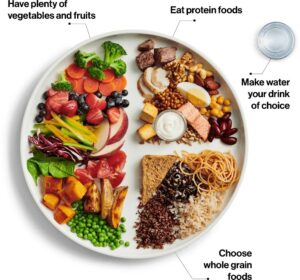It’s that time of year again when the seasons begin to change, the air starts to get colder, and we welcome our students back to campus (some for the very first time). The transition from high school to post-secondary can be hard because for some it’s your first time living by yourself and having control of your own schedule. It can be easy to start to veer off track at this time because so many changes are happening all at once. Establishing a routine becomes (one of the) most important things you can do to keep everything in check. This can be a daunting task for those who have never done so. I am here to ease that transition and make it just like riding a bike (if you don’t know how to ride a bike – well, what I am trying to say is it’s easy once you learn how).
One of the first things you can do to set yourself up for success is to create a calendar to plan out your semester. Back in the day when I was in school (slow down now I am not that old – it was only a few years ago, I promise). I would start by going through my course syllabi and jotting down the important dates like tests and when projects were due. This allowed me to be aware of them ahead of time and not get ambushed by deadlines that I wasn’t expecting. Full transparency here, I did not learn this trick until my second year so this is some insider information for all you new students. Freshman Emma was struggling on the planning front, but if you know me now, I am THE MOST organized.
Staying organized also requires a sharp brain, which you can improve by establishing personal habits. For example, instead of scrolling through TikTok or your PS5 at 12 am (don’t lie, I know you do it), you could try to go to bed at the same time every night. Our bodies have this thing called the circadian rhythm and if you go to best at the same time every night it allows you to get used to the routine and naturally wake up, even without an alarm (regardless of this I would still recommend an alarm for you heavy sleepers out there). If you want to get even more into a routine, you can also try adding things like going to the gym and eating at similar times each day.
Another relatively easy thing to do is to connect with new people. Try introducing yourself to your neighbors, start a conversation with a classmate, join a club, or attend first-year orientation events. All these things can create easy opportunities to connect with a new group of friends. Alternatively, from a financial side, a good habit to start is setting a budget. Starting post-secondary comes with many costs and it’s important to set yourself up for success to reduce any financial stress. When doing this make sure you include necessities like food and parking, and add for unplanned expenses like social outings, etc. This will ensure you are prepared and able to enjoy your post-secondary experience while remaining within budget.
Finally, make sure you are setting achievable goals. I wrote a blog on this that goes more in-depth and helps identify how to do this. Overall, you must set small and manageable goals to work toward your desired outcome. Jumping in with both feet is great, but it is important to consider the steps along the way to ensure you don’t sink. If you are feeling overwhelmed, which is common with all these new and exciting changes, make sure you seek support if you need it. There are a lot of great programs at the college to help mitigate the transition.
At the end of the day, I know you will find your way and we will do our best to support you in getting there!
